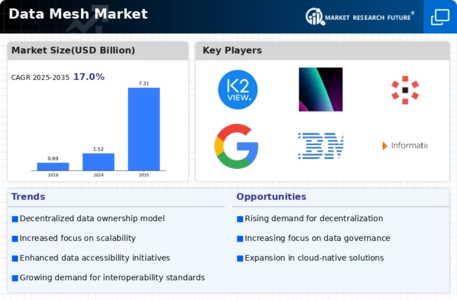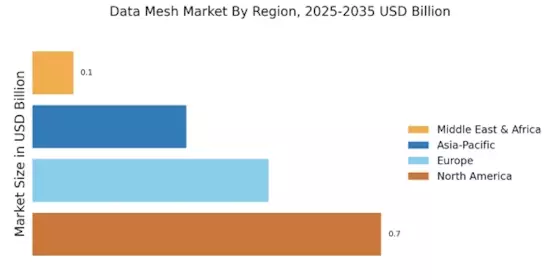Leading market players are investing heavily in research and development in order to expand their product lines, which will help the data mesh market grow even more. Market participants are also undertaking a variety of strategic activities to expand their global footprint, with important market developments including new product launches, contractual agreements, mergers and acquisitions, higher investments, and collaboration with other organizations. To expand and survive in a more competitive and rising market climate, the data mesh industry must offer cost-effective items.
Manufacturing locally to minimize operational costs is one of the key business tactics used by manufacturers in the global data mesh industry to benefit clients and increase the market sector. In recent years, the data mesh industry has offered some of the most significant advantages to medicine. Major players in the data mesh market are attempting to increase market demand by investing in research and development operations, including K2view, AWS, Denodo, Google, HPE, IBM, Informatica, Global IDs, Snowflake, Microsoft, Monte Carlo, Teradata, NetApp Oracle, Radiant Logic, SAP, and Talend.
A supplier of information technology goods and services is International Business Machines Corp. (IBM). The business creates and markets system hardware and software in addition to providing infrastructure, hosting, and consulting services. The product line of IBM includes software development tools, cloud computing, blockchain technology, artificial intelligence, automation, analytics, and IT infrastructure and management. Cloud, networking, security, application, business resilience, and technology support services are among the other services that the company provides. It also provides technological consultancy. In December 2023, version 4.8 of Cloud Pak for Data (CPD) was formally released by the IBM Cloud Pak for Data team.
Many new features have been added to this update, the main one being an improvement in serviceability that will help with better management and upkeep of the CPD Platform and its services.
Microsoft Corp. (Microsoft) is a software development and services company that offers hardware and software solutions. A wide range of operating systems, video games, desktop and server management tools, server applications, business solution apps, cross-device productivity apps, software development tools, and training and certification services are all provided by the corporation. Hardware items like PCs, tablets, games, entertainment consoles, and other intelligent gadgets are also designed, manufactured, and sold by the company. Cloud-based solutions, solution support, and consulting services are just a few of the many services the company offers.
In September 2023, Oracle Database @ Azure, which provides users with direct access to Oracle database services operating on Oracle Cloud Infrastructure (OCI) and deployed in Microsoft Azure datacenters, was launched by Oracle and Microsoft.


















Leave a Comment